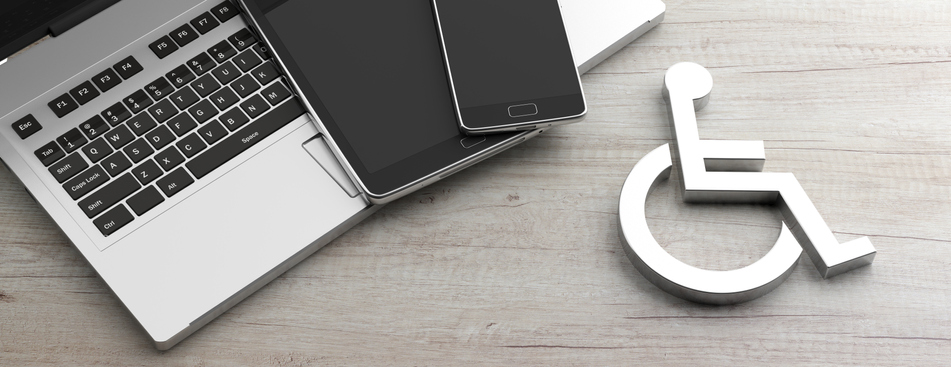Living with Chronic Pain
Tips for Reducing Pain When Working from Home

The ability to work from home creates accessible employment for many people with a chronic pain condition. Avoiding an office environment results in less worry and energy spent on getting dressed, making the commute to work, and socializing with coworkers throughout the day. A person can keep convenience at their fingertips, work in a familiar environment, and take breaks as needed. Oftentimes, they are able to create a customized work schedule.
Working from home, however, can also be a source of additional pain. The back, neck, wrists, shoulders, and eyes can be negatively impacted by an inadequate work-from-home provision. Creating a comfortable workstation and using certain office tools may reduce pain that is caused or worsened by working remotely.
Habits and adjustments
Certain habits or adjustments are necessary to effectively reduce pain when working from home. They include the following:
- Designated work area
It is imperative to have an area that is designed for you. Tools should be placed nearby in shared workspaces to make them easily accessible. This includes books or boxes to raise the computer monitor to a suitable height, or pillows for back support. - Table or desk
A desk or table is best when working from home. Working from a bed produces a sub-par screen height and poor back and hip support in comparison to a desk chair. While it is good to stand up, stretch, and take breaks, standing for long periods can strain the circulatory system and place stress on the legs and feet. The surface for a keyboard should be level with bent elbows so that the wrists remain straight, and the arms do not angle upwards or downwards (at or slightly above belly-button level). Elbows should rest comfortably at a 90-degree angle. - Chair
An office chair allows for adjustments to your own specifications. If it is unavailable, a lumbar support pillow can help maintain proper back alignment. Feet should be flat on the ground with the knees bent at a 90-degree angle. - Computer monitor
A computer monitor should be at or just below eye level to prevent the neck from extending up or down to see the screen. The screen should be easily read 18-25 inches from the face to avoid eye strain. Additionally, the “20/20/20” rule can be implemented as a way to rest the eyes. This involves taking a break every 20 minutes to look 20 feet (6.1 m) away for 20 seconds. - Lighting
Proper lighting in the work area prevents eye strain. Having a window directly behind or in front of yourself while working at a computer can cause a glare or make a screen difficult to see. It is best to have a window to the side when using a computer. - Breaks
Taking regular breaks when sitting at a desk is crucial in avoiding additional pain. Standing every 20 minutes can reduce stiffness, increase blood flow, reset postural habits, and prevent back pain. Long periods of sitting can cause you to disengage the core muscles, which changes the positioning of the hips and contributes to back pain. Taking a break to stand or walk around can prevent these issues. - Stretch
Stretching can help combat pain acquired by working at home. Stretches can be paired with regular breaks or even done while sitting. Stretching the neck, hips, pectoral muscles, hamstrings, and calves is beneficial for various aches and pains.
Tools
Certain tools can help reduce pain when working from home. They include the following:
- Document holder
Bending over a desk to view documents is bad for posture. It may be worth investing in a document holder or music stand to keep papers at an easy-to-read angle. - Voice input
Using speech-to-text reduces the amount of typing needing to be done when writing articles, sending emails, and performing various other tasks. It also lessens strain placed on the wrists and may potentially get the job done faster. - Blue light filter
Laptops and other screens emit blue lights, which can put unnecessary strain on the eyes. Blue light filter glasses help reduce the amount of blue light experienced. A filter application may also be applied to a computer, phone, tablet, or other screen. - External keyboard
An external keyboard is useful when working with a laptop to adjust the height of the screen and keyboard. This allows the laptop to be elevated without sacrificing the ability to type at a suitable level. - Headset
If a job requires you to be on the phone, having a headset can eliminate neck strain and pain arising from holding a phone in between the ear and shoulder. A headset allows you to work on your computer, hands-free, without requiring twisting or uncomfortable positions.
Conclusion
Working from home provides workforce participation for many people with disabilities. Unfortunately, certain habits and environmental factors that occur in work-from-home settings can cause additional pain. Changing these factors can help make working from home a productive and comfortable experience.
Additional sources: Time, Health Matters: NewYork-Presbyterian, Yale Medicine, Hospital for Special Surgery, and Banner Health


















